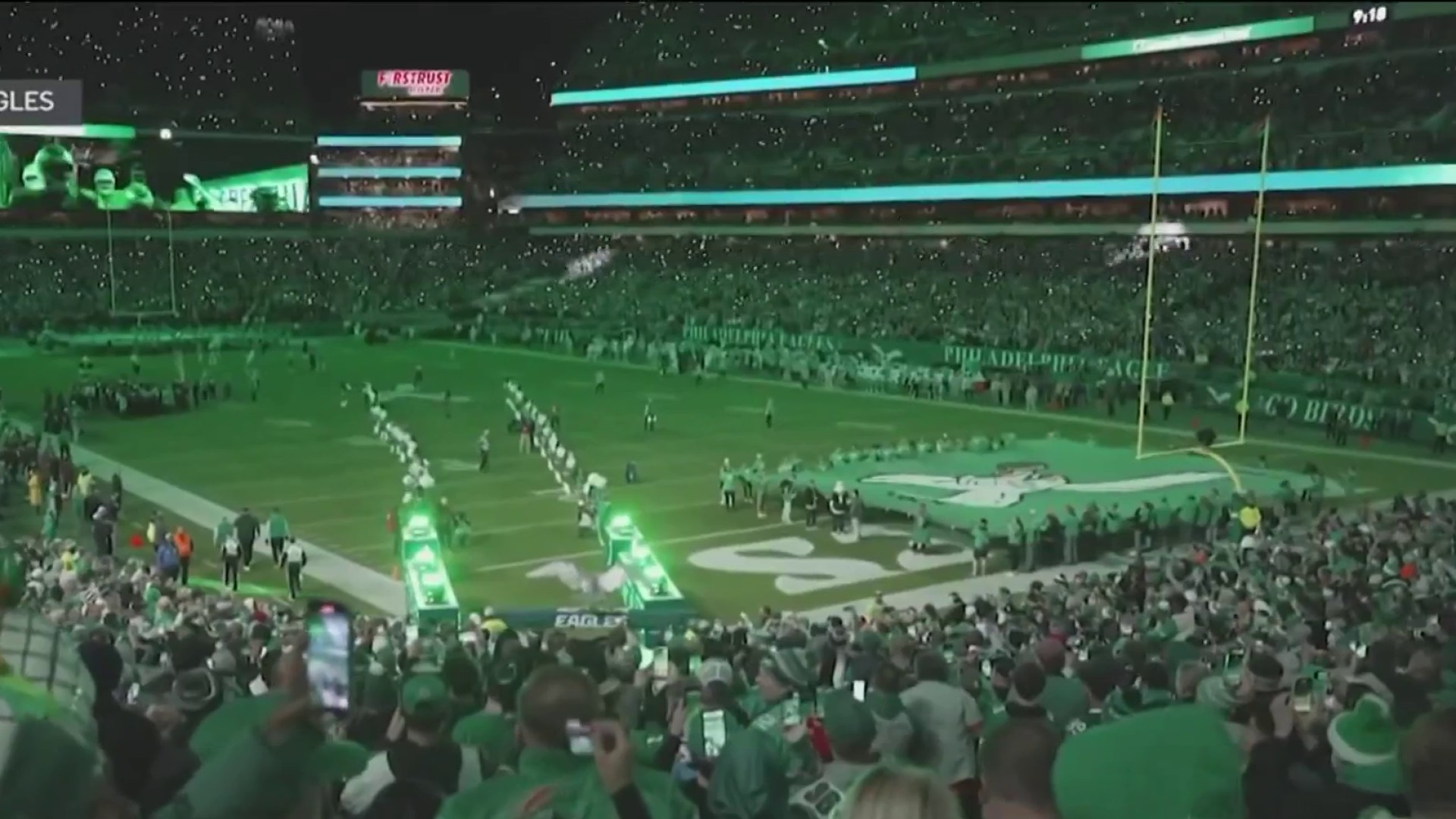The Eagles certainly had an interesting draft. There weren't that many picks to dissect so let's get right to it:
Carson Wentz, QB, North Dakota State, (6-5/237), 1st Round, No. 2 overall
Think we all get the gist by now.
How he fits: This is a little tricky. Ideally, the Sam Bradford drama subsides and Wentz is given the opportunity to watch and learn while he adjusts to the speed of the NFL game.
Outlook: Wentz has everything you want in a franchise quarterback. It's just a matter of him putting it all together at the highest level.
Isaac Seumalo, OL, Oregon State, (6-4/303), 3rd Round, No. 79 overall
Seumalo is versatile, tough and smart. He's a decent athlete. Although he's played at tackle (and held his own against Oregon and first-round pick DeForest Buckner), he's probably best suited to play on the inside.
How he fits: Seumalo seems like Jason Kelce insurance. It's no secret that Kelce struggled last season. Seumalo's best position is probably center. If Kelce returns to Pro Bowl form with a better line around him, Seumalo can slide to guard.
Outlook: This was a safe pick. Seumalo has a very high floor. He's less likely to bust then some of the high-ceiling guys that were available like Texas Tech tackle Le'Raven Clark. Seumalo might have been a bit of a reach but not an egregious one.
Philadelphia Eagles
Complete coverage of the Philadelphia Eagles and their NFL rivals from NBC Sports Philadelphia.
Wendell Smallwood, RB, West Virginia, (5-10/208), 5th Round, No. 153 overall
Smallwood was a productive back during his time at West Virginia. He was the leading rusher in the Big 12 in 2015 and decided to come out early. He looks "pro-ready" with his ability in pass protection and as a receiver out of the backfield. He also comes with red flags.
How he fits: Smallwood is as safe as a guy with red flags can be.The Eagles needed a back that could play right away given that Ryan Mathews, who has had 181 carries in his last two seasons combined, is currently No. 1 on the depth chart. Smallwood also tested very well (4.41 40, best 3-cone and 60-yard shuttle of any back at the combine), suggesting that there could be more potential there.
Outlook: Howie Roseman had to take Smallwood, who was graded generally as a sixth- or seventh-rounder, after the run on backs began late in the fourth round. A back that intrigued me who was on the board when the Eagles picked was Jonathan Williams from Arkansas. Williams has prototypical size and showed flashes of being special, but injuries derailed his 2015 season before it even got started. Smallwood is durable and ready to play from Day 1.
Halapoulivaati Vaitai, OT, TCU, (6-6/320), 5th Round, No. 164 overall
"Big V" as he's called, is just that: big. He's also solid from a technical standpoint. He played both right and left tackle during his time at TCU. Not the most athletic, which makes him a better fit on the right side or perhaps even inside at guard.
How he fits: After ignoring the position during pretty much the entire Chip Kelly Era, Roseman added two tough and technically sound players to the position group. The Eagles needed to get younger and add more depth. They've done that with Seumalo and Vaitai.
Outlook: I've already completely overused the word "safe" so clearly there's a pattern. Athletically, Vaitai is nothing special. He's just a good football player. The athleticism may grow into a concern at some point, but for now, you're getting a guy who knows how to play the position. Is he your right tackle of the future? We'll see. I thought Baylor's Spencer Drango or Stanford's Kyle Murphy may have been better picks here.
Blake Countess, DB, Auburn, (5-9/186), 6th round, No. 196 overall
Countess transferred to Auburn from Michigan as a graduate student. He's undersized at 5-9, but he has good instincts and is versatile, having played every position in the secondary.
How he fits: The Eagles have a starting safety tandem locked up, but the corner position carries a lot of uncertainty for the future. Veterans Nolan Carroll and Leodis McKelvin are here on short-term deals, and Eric Rowe, although he played very well at the end of his rookie season, still has a lot to prove. Countess adds more competition and could contribute immediately on special teams.
Outlook: Countess was considered by many to have a priority free-agent grade. The Eagles reached for him in the sixth round. I liked corners Maurice Canady out of Virginia Tech and Harlan Miller out Southeastern Louisiana. Both were still on the board at that point. Southern Miss receiver Mike Thomas was a guy the Eagles did some homework on who was also available. This pick was a bit of a head scratcher.
Jalen Mills, DB, LSU, (6-0/191), 7th Round, No. 233 overall
Mills is an interesting case. He was a valuable member of LSU's secondary the last four seasons. He's a safety, but he often dropped down to cover the slot much like Malcolm Jenkins did for the Eagles in 2015. A broken fibula and off-the-field concerns are the reasons Mills dropped to the seventh round.
How he fits: Mills could compete for playing time as a rookie. He has the ability to cover in the slot. If Jim Schwartz decides to keep dropping Jenkins down to cover in nickel, Mills could be the extra safety on the field instead of Chris Maragos or Ed Reynolds.
Outlook: This is one of my favorite picks the Eagles made. If you flipped Countess and Mills it would make more sense. It was clear in watching him in 2015 that the healthy Mills of 2014 was better. He isn't the greatest tackler and he's certainly not a burner (4.61 40), but he can cover. It wouldn't surprise me to see Mills get snaps as a rookie in 2016.
Alex McAlister, DE, Florida, (6-6/239), 7th Round, No. 240 overall
As weird as it sounds, Mills and McAlister might be my two favorite picks after Wentz. McAlister comes with baggage, having been dismissed from Florida. But this guy possesses the one thing that may be the hottest commodity in the NFL right now: the ability to get after the quarterback.
How he fits: Andy Reid used to call guys like this "fastballs." McAlister could be used on obvious passing downs. If he flashes in camp, he could force Schwartz's hand as he looks for more pass rushers beyond his top-three guys (Vinny Curry, Connor Barwin, Brandon Graham). In a wide nine sub package, it'll be tough for offensive tackles to keep up with the speed and athleticism of McAlister.
Outlook: If this kid has his head on straight and is coachable, look out. Over the past two seasons, he played less than 40 percent of the defensive snaps at Florida and still recorded 12½ sacks. He's undersized so he struggles against the run. All he can do is rush the passer, but that skill is at a premium in the NFL. He's certainly worth a flyer in the seventh round.
Joe Walker, LB, Oregon, (6-2/236), 7th Round, No. 251 overall
Walker was productive at Oregon, recording 168 tackles combined as a starter the last two seasons. His workout numbers were very good, which is why he went from a guy with a priority free-agent grade to a fringe seventh-rounder.
How he fits: He's got special teams written all over him as a rookie. He was decent in coverage for the Ducks and that will likely be how he sees the field at the pro level. This is an area where the Eagles need more depth so Walker has a decent chance to make the team.
Outlook: I was disappointed the Eagles chose not to upgrade the linebacker position with Temple's Tyler Matakevich, who came off the board just before the pick of Walker. Perhaps what the Eagles liked about Walker was his athleticism and ability in coverage. Matakevich is certainly a better 'backer from an instinct and playmaking standpoint.



